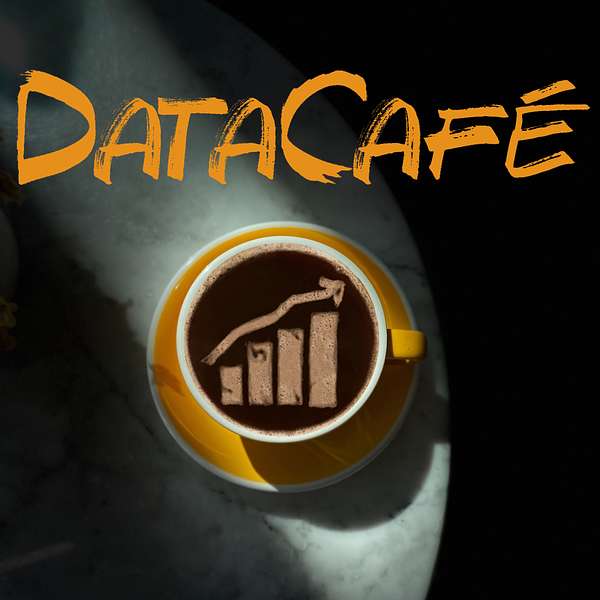
DataCafé
DataCafé
Viruses: Keep Calm and Use Statistics
What is a virus? How can we spot human viruses in danger of becoming pandemics? How can we use statistics to understand their origins and transmission? This turns out to be a hard problem - not least because there can be many hundreds or thousands of slightly modified strains of a virus in a small sample of blood. It is of great importance which version of a virus will become a pandemic in a population and which will merely peter out.
Viral geneticists have to be expert statisticians to be able to disentangle this story. Fundamentally if we can use statistical techniques to understand which versions of a virus are prevalent and where they originated from we can start to design counter measures to defeat the further spread of the virus.
We speak to statistician and data scientist Dr. Kat James about her DPhil and post-doctoral work on the statistical genetics of animal-human viruses, in particular HIV-2, at the Nuffield Department of Medicine and the Wellcome Trust Centre for Human Genetics, University of Oxford. She is now Head of Data Science at Royal Mail and has some some valuable insights on the crossover between statistical genetics and data science.
As we discover, the current coronavirus pandemic is a so-called zoonotic virus - which means it transitioned from animals to humans at some point and has become a very successful virus in the human population. COVID-19 has similarities to influenza, HIV-1 and HIV-2, MERS and SARS as we will discover in this episode and Kat gives us some interesting lessons to learn from previous pandemics.
Background on HIV
HIV-1 is one of the major viral pandemics of the 20th century. Untreated, it has a greater than 95% probability of death and it has killed 33 million people (it still accounts for 750,000 deaths per year).
Using statistical genetics, researchers have been able to identify 3 spillover events into humans for HIV-1. Human viruses often interact with developments in human geography as part of the infection dynamics and this is certainly true of HIV-1 over the course of its emergence as a pandemic virus.
HIV-2 is a distinct but similar virus to HIV-1 and people who are infected with HIV-2 often demonstrate resistance to HIV-1. Eight spillover events from Mangabey monkeys have been identified for HIV-2.
With interview guest Dr. Kat James who is now Head of Data Science at Royal Mail.
Further reading
- Paper: Low-Bias RNA Sequencing of the HIV-2 Genome from Blood Plasma (via Journal of Virology, American Society for Microbiology)
- Article: Introduction to PCR amplification (via Kahn Academy)
- Article: Tracking COVID19: Coronavirus came to UK 'on at least 1,300 separate occasions' (reporting on work by Universities of Birmingham and Oxford via BBC News website)
Some links above may require payment or login. We are not endorsing them or receiving any payment for mentioning them. They are provided as is. Often free versions of papers are available and we would encourage you to investigate.
Recording date: 7 July 2020
Interview date: 9 June 2020
Thanks for joining us in the DataCafé. You can follow us on twitter @DataCafePodcast and feel free to contact us about anything you've heard here or think would be an interesting topic in the future.